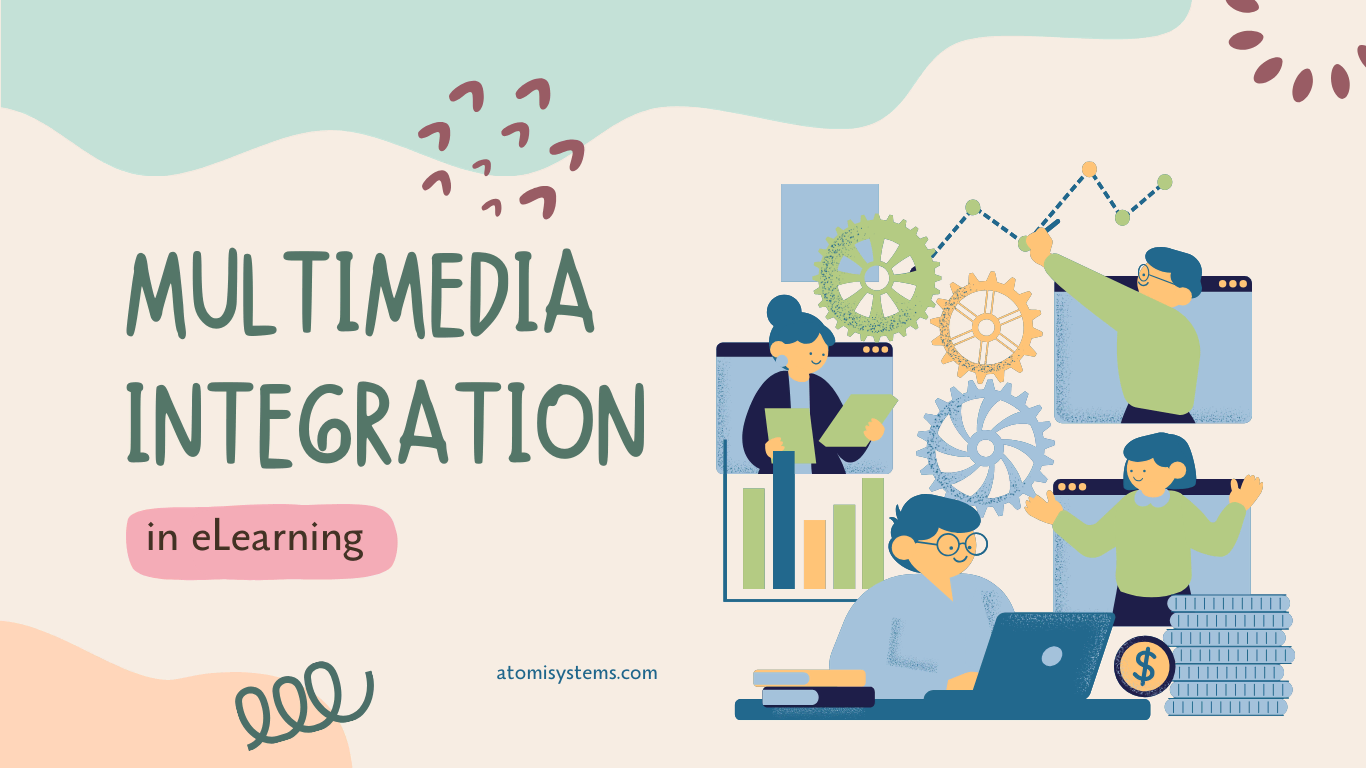What are the essential elements contributing to a successful multimedia integration in eLearning? How does multimedia integration elevate your design? Let’s discuss further throughout this blog.
In the ever-evolving world of eLearning, multimedia integration has become a cornerstone of effective educational design. By blending various forms of media, eLearning professionals can create engaging, interactive, and dynamic learning experiences that cater to diverse learning styles and preferences.
In this blog, we’ll explore the key elements required for successful multimedia integration in eLearning and how they can elevate your design to new heights. For instructional designers seeking a powerful tool to seamlessly weave together text, images, audio, video, and interactive elements, ActivePresenter stands out as a remarkable eLearning authoring solution. Its comprehensive features make multimedia integration intuitive and efficient, empowering you to create truly captivating learning experiences.

Key Elements of Multimedia Integration in eLearning
Text
The foundation of most eLearning content, text provides essential information, instructions, and explanations. Well-written text should be clear, concise, and organized to enhance readability and comprehension. Incorporating headings, bullet points, and summaries can make text more digestible.
Image
Visuals are powerful tools that can simplify complex concepts and capture learners’ attention. Images can include photographs, illustrations, infographics, and diagrams. They should be relevant and high-quality to support the content and provide visual context.
Audio
Audio elements, such as voice-overs, sound effects, and background music, can enhance the learning experience by adding a layer of engagement and accessibility. Voiceovers can explain concepts in a conversational tone, while sound effects and music can create an immersive environment.
Video
Videos are incredibly effective for demonstrating processes, providing real-life examples, and breaking down intricate topics. They can be used for lectures, tutorials, and case studies. Ensure that videos are well-edited, relevant, and accompanied by clear captions or transcripts.
Animation
Animations can bring static content to life by illustrating dynamic processes or concepts. They are particularly useful for visualizing complex ideas, such as scientific phenomena or workflows. Animations should be smooth and purposeful to avoid distraction.
Interactive Elements
Interactive features, such as quizzes, simulations, and drag-and-drop activities, engage learners actively and provide opportunities for practice and assessment. These elements can reinforce learning, test understanding, and provide instant feedback.

Infographics
Infographics combine text, images, and data to present information in a visually appealing and easily digestible format. They are ideal for summarizing key points, showing statistics, or explaining relationships between concepts.

Virtual Reality (VR) and Augmented Reality (AR)
VR and AR offer immersive experiences that can simulate real-world scenarios or overlay digital information onto the physical world. These technologies can enhance experiential learning and provide practical, hands-on experiences in a virtual space.
How Multimedia Integration Elevates Your eLearning Design
Enhanced Engagement
Multimedia elements capture learners’ attention and make the learning experience more engaging. Moreover, interactive and visually appealing content encourages participation and reduces boredom, leading to higher levels of motivation and interest.
Improved Retention and Understanding
By presenting information through various media, learners can better understand and remember content. For example, combining visual and auditory inputs can help reinforce concepts and cater to different learning styles.
Increased Accessibility
Multimedia can make content more accessible to diverse learners, including those with disabilities. For instance, captions and transcripts ensure that audio and video content is accessible to learners with hearing impairments, while descriptive images aid those with visual impairments.
Practical Application
Interactive elements, such as simulations and case studies, allow learners to apply knowledge in realistic scenarios. This hands-on approach helps bridge the gap between theory and practice, enhancing the relevance and applicability of the content.
Dynamic Learning Environments
Incorporating multimedia creates a rich, varied learning environment that can adapt to different teaching goals and learner needs. By using a combination of text, visuals, and interactive elements, you can create a more dynamic and flexible learning experience.
Immediate Feedback and Assessment
Interactive quizzes and simulations provide learners with immediate feedback, helping them gauge their understanding and identify areas for improvement. This timely assessment can guide further learning and support mastery of the content.
Motivation and Enjoyment
Multimedia elements, such as gamified activities or engaging animations, can make learning more enjoyable. A positive and interesting learning experience can increase motivation and encourage learners to stay committed to their educational goals.
Best eLearning Tool with Multimedia Integration
Among the eLearning tools highly-recommended for educators, ActivePresenter is the best multimedia authoring tool you should not miss out on. Because it stands out as a premier eLearning software, offering 3 main functions: screen recording, video editing, and interactive content development.
With ActivePresenter, users can create rich and interactive eLearning modules. This is because the tool incorporates almost all multimedia elements like text, image, video, audio, animations, quizzes and interaction objects to build infographics or other interactive visuals. Its intuitive interface and powerful features make it easy to design engaging content from easy to advanced levels. Whether for corporate training, educational content, or personal projects, ActivePresenter provides a comprehensive solution for all eLearning needs at an extremely economical price.

Conclusion
To conclude, multimedia integration is a powerful strategy for enhancing eLearning design. By thoughtfully incorporating text, images, audio, video, animations, interactive elements, infographics, and emerging technologies like VR and AR, eLearning professionals can create engaging, effective, and inclusive learning experiences. As technology continues to advance, exploring new multimedia possibilities and staying updated with best practices will ensure that your eLearning design remains at the forefront of educational innovation.
Don’t forget to follow our YouTube channel and read more of our Blog to keep updated on the latest eLearning news and tips.